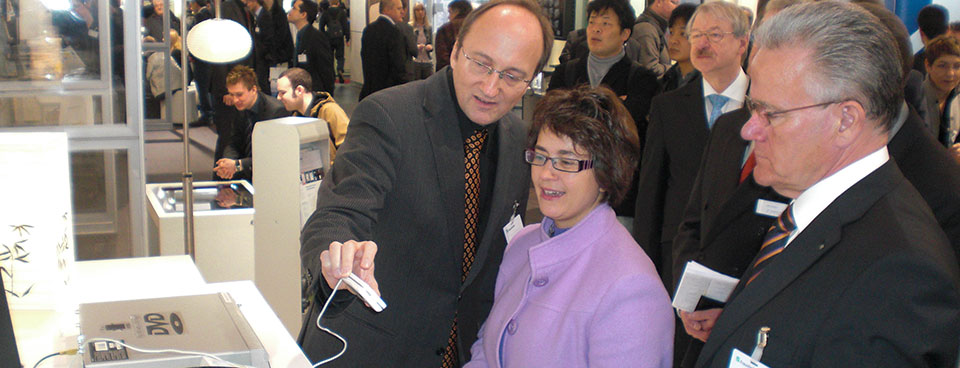Middleware for networked embedded systems


Embedded Systems denotes invisible modular systems that are combined to form complex higher-order systems and are used, e.g., in motor vehicles, airplanes, "intelligent" buildings or home multimedia systems. Advanced applications in these fields require to network growing numbers of devices, typically from more than just a few manufacturers.
Given the plethora of heterogeneous devices, sensors and actuators in the field, the large number of manufacturers and the differences in their speed of innovation, there is an urgent need for technologies and tools that make it easier to reap the benefits of networked systems. And the complexity to build such technologies and tools grows exponentially with the number of devices, manufacturers and protocols involved.
For this envisioned situation in the field of "Networked Embedded System", the European Hydra project develops a "Middleware for Heterogeneous Physical Devices". It will help manufacturers and systems integrators to build devices that can be networked easily and flexibly to create cost-effective high performance solutions. The results of the Hydra project will reduce design complexity by providing well-defined open interfaces between types of devices. For field-test and validation of the Hydra middleware, three application fields have been chosen: management of intelligent buildings, health care, and agriculture.
Fraunhofer FIT coordinates the Hydra project and is furthermore in charge of system design and software architecture. We also have a key role in the scenario-based requirements analysis, and are responsible for mapping the requirements from embedded device architecture, networks, MDA and security / trust onto the architecture.
The Hydra middleware will have a transparent communication layer, equally supporting centralized and distributed architectures. The Hydra middleware takes security and trust into account and will allow to build model-guided web services. It will run on wired or wireless networks of distributed devices with limited resources. The embedded and mobile service-oriented architecture will provide fully compatible data access across heterogeneous platforms, allowing to create true ambient intelligence for ubiquitous networked devices.
In addition to the middleware, the Hydra project will produce two tools that will simplify the development process based on the Hydra middleware, a software development kit (SDK) and a device development kit (DDK).
The project team has already developed a middleware prototype and implemented two scenarios. First, a sensor-equipped Lego-mock-up-building that sends short messages to inform about a technical defect. This demo includes a situation where a sensor detects humidity inside the house’s heating system and alerts the inhabitant by sending a message to her mobile phone in case she is not at home. In the next step, an order for an emergency repair request is sent to a service company, including a limited-validity electronic key for the building.
Second, a mobile health scenario has been developed showing a conceptual healthcare assistance system. It consists of a personalized device for patients under supervision at home that reminds them of important activities inside their personalized healthcare-plan. The demonstrator includes a mobile application running on a secure server. A physician and a mobile healthcare service can access different parts of that application by authenticating themselves with a smartcard. Depending on the access right, different information about the patient’s current status is available. The scenario involves the possibility for the physician to change the medication, prescribe measures and to send messages to the patient in order to give advice.
The third prototype is a demonstration for home automation. Electrical devices are connected via smart plugs which can be remotely controlled by the user. The user is always aware of the current power consumption and which devices are turned on. A live camera feed allows the user to monitor their home. Controlling the devices can be done with a smartphone, or with any web browser. More information and a live demonstration is available here.
The Hydra project was co-funded by the European Commission within the Sixth Framework Program.